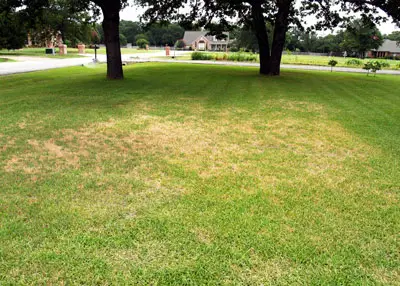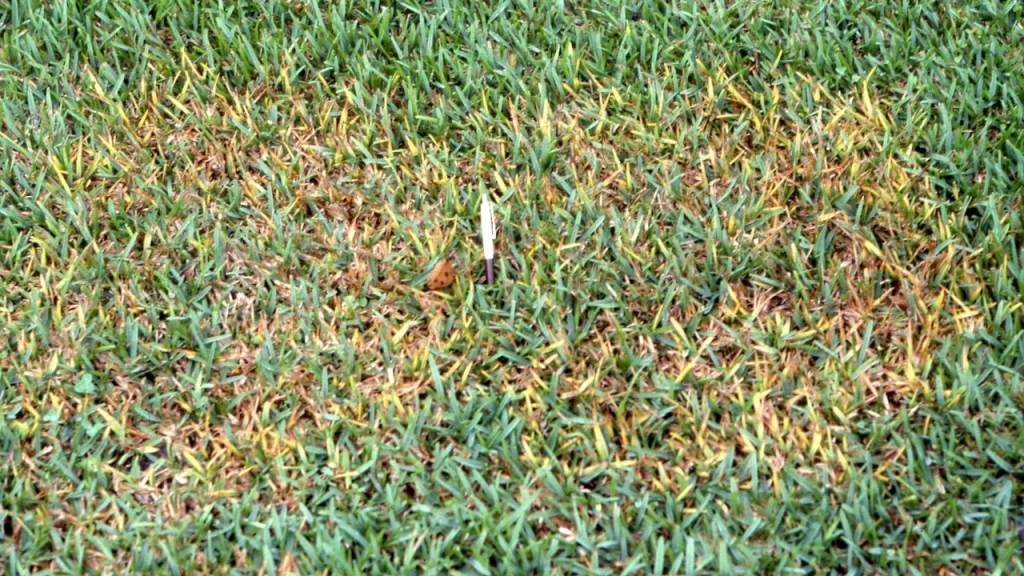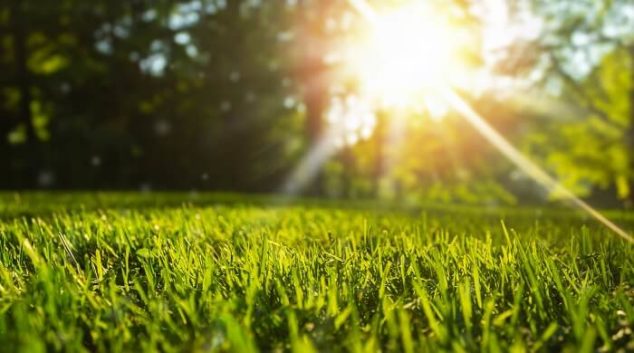St Augustine is a popular variety of grass for those wanting a lush, carpet-like lawn in warm climates. It makes for a hardy, drought-resistant lawn that is relatively low maintenance, but St Augustine does thrive and look better in certain conditions than others. Luckily, imitating these conditions for making your St Augustine greener is doable – with a little extra effort and a strict lawn maintenance schedule. Here’s how to make St Augustine grass greener:
To make St Augustine grass look greener and healthier, the lawn needs plenty of sunlight and to be fertilized regularly with a nitrogen-rich fertilizer. With regular and attentive maintenance, you can get that deep dark green color, so many lawn owners wish to achieve.
St Augustine Grass Turning Light Green or Yellow

Is your St Augustine lawn faded and lacking that deep, lush green you once had?
There are many reasons grass can lose color, including missing nutrients, lack of sun, or environmental stress.
The majority of cases will be due to a lack of certain nutrients in the soil. Nitrogen and iron are important to keep integrated into your lawn’s ‘diet,’ especially in sandy soil.
When St Augustine grass begins to turn a light green, the first thing to do is put down a fertilizer rich in Nitrogen and maybe an iron supplement.
A lawn of St Augustine grass could start yellowing if it does not have enough access to sunlight. If your lawn has some shady corners, consider overseeding with another shade-tolerant variety.
Why is my St Augustine Grass Turning Brown?

Of course, the weather and seasons can also play a part in the coloring of your lawn. It is perfectly normal for St Augustine grass to go brown and dormant once frost hits in cooler climates. Similarly, drought or lack of water during a hot spell could be responsible for a faded lawn.
Read on to discover three ways you can ensure the best environment for growing a green, lush St Augustine turf!
What Can I do to Make my St Augustine Grass Greener
1. Fertilize and Feed
Looking to boost your lawn’s color to a richer, darker green? Nutrient-rich soil is a great place to start. St Augustine responds well to a nitrogen-rich environment, and for most, this requires regular fertilization.
We recommend this organic, slow-release fertilizer from Milorganite. It is a great fertilizer for keeping a green, lush lawn all season long.
For a quick boost of green, you can use a quick-release fertilizer such as Simple Lawn Solutions. A quick release will show fast and often impressive results but will require multiple applications throughout the growing season to maintain the effects.
Be careful not to apply more than one pound of total nitrogen per 1,000 square feet per month.
Iron is also a vital nutrient for St Augustine grass. Consider spraying sulfate at a rate of 2 ounces to 3-5 gallons of water per 1000 square feet. You can always test the soil’s pH level to see if it is too acidic or not acidic enough and treat it accordingly with a lime treatment.
Read our guide on the best fertilizers for St Augustine turf for more inspiration.
2. Let Sun In

St Augustine requires plenty of full sun. If you notice the quality of your turf depleting in the shady areas of your lawn, maybe it’s time to re-landscape your yard.
Consider the amount of shrubbery your yard has and which way it faces – also think about the benefits of a fence that lets light through, instead of a solid one. Trim away branches and debris of surrounding trees and bushes to let in the sunlight.
3. Maintenance and Care

As is the case with any plant, there is always such a thing as too little or too much water. St. Augustine likes to be watered deeply and kept moist under the thatch, but not wet.
If your soil is relatively sandy and drains quickly, or if you live in a hot and dry climate, your lawn will need to be watered 4 inches deep about twice a week. Under normal conditions, water the turf 1 inch deep once a week.
Take care not to mow St Augustine too short, or else you may stunt its growth pattern and therefore lose the lush color and texture. St Augustine should be mowed at approximately 2 and a half inches and 3 inches in shaded areas. It is important to be in the habit of cutting your lawn often, but not short.
We recommend products from companies like Amazon, which we also get a small commission from, to keep this website running. However, we want to stress that all of the products we recommend are tested, used by us, and 100% unbiased and true.

